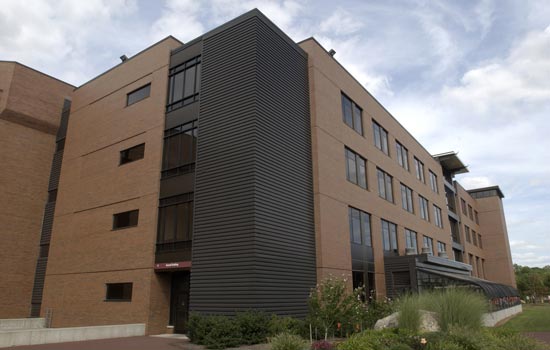Professor unlocks black hole mystery
A. Sue Weisler
RIT's College of Science
Someday scientists will trace gravitational waves backward in time and space to their originating source—to the collisions of compact masses that created them and, perhaps, to the beginning of the universe. While technology to detect and observe gravitational waves improves, scientists like RIT’s Manuela Campanelli are realizing important advances that will make the field of gravitational wave astronomy a reality.
In 2005, Campanelli and her colleagues, Carlos Lousto and Yosef Zlochower, were one of two groups of scientists credited with simulating the merger of two black holes on a supercomputer according to Albert Einstein’s theory of general relativity for strong field gravity. Campanelli’s team solved the 10 interrelated equations for strong field gravity that comprise Einstein’s famous theory explaining the connection between matter, space and time. The ability to detect gravity waves has hinged for years on solving the equations and simulating the environment—the merger of two black holes—that would lead to them. Building on their breakthrough, Campanelli and her team, collaborating with RIT astrophysicist David Merritt, recently observed changes in the gravitational field when spinning black holes collide.
Their papers, posted on Cornell Universities scholarly article distribution service, show spinning black holes wobbling like a top and confirm the spin-flip phenomenon that occurs when the remaining black hole in a merger changes its orientation. Her research also verifies the occurrence of recoil or “kick” that moves or displaces a black hole after merging with another of unequal size and different spin orientation.
Campanelli recently joined RIT’s School of Mathematical Sciences from the University of Texas, Brownsville, to direct the new Center for Relativity and Gravitation, which focuses on computational gravitational physics and astrophysics research. Following her from the Center for Gravitational Wave Astronomy are Lousto, Zlochower and postdoctoral researcher Hiroyuki Nakano. “To do this level of research and to stay ahead of the competition really depends on direct access to supercomputing facilities,” Campanelli says. “It comes down to computer brainpower.” “It is a real coup for RIT to have attracted a world-class researcher of the caliber of Manuela Campanelli,” says RIT Provost Stanley McKenzie. “She will further enhance our already formidable group of astro-sciences faculty and serve as a mentor and role model for faculty in our School of Mathematics.”









